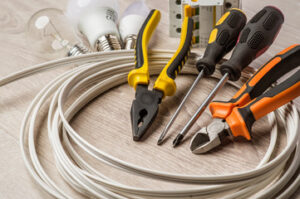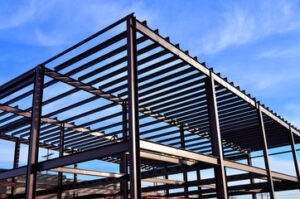Plumbing problems like leaks and clogs can turn into major disasters that require professional help. This type of service is a necessity in residential and commercial properties.

A well-crafted business plan is the cornerstone of a successful plumbing company. It defines your mission and goals, and includes a detailed financial projections. Contact Ranger Plumbing Company for professional help.
Professional plumbers are trained to work on a variety of plumbing issues, including clogs and leaks. They follow strict standards and procedures to ensure the quality of their work. They also use the latest tools and technology to diagnose problems quickly and accurately. This ensures that repairs are done correctly the first time, saving customers both money and hassle.
Unlike some DIY fixes, plumbing repairs from professional plumbers are durable and last for years. In fact, many homeowners report that they are still satisfied with their plumber’s work 10 or even 20 years after the initial installation. This longevity is a testament to the expertise and dedication of professional plumbers.
Hiring the right team is essential for a plumbing company’s success. Look for candidates with excellent customer service skills and a strong work ethic. During the hiring process, you should include skill tests to assess applicants’ ability to solve plumbing problems in various scenarios. You can find potential employees through job postings on job websites, local community boards, and trade schools. You should also conduct references checks to verify credentials and previous experience.
Starting a plumbing company requires significant financial investments, such as equipment and payroll. You may seek funding through small business loans or investors, or dip into your personal savings. However, you must carefully weigh these options against the potential risks of starting a new business. A legal professional can help you select the best business model for your needs and resources, while protecting your personal assets from any future debts or liabilities.
Reliability
The reliability of a plumbing company refers to the ability of its professionals to provide consistent, long-lasting results. This is important for maintaining customer satisfaction and building trust. Professionals should adhere to industry standards and use advanced tools and techniques to deliver high-quality workmanship.
To hire reliable plumbers, a business should conduct background checks and skills assessments before hiring. It also should verify licenses and certifications and check references. It should avoid questions that may be considered discriminatory, such as age, religion and marital status.
To start a plumbing business, a company must register a name, obtain a federal employer identification number and acquire the necessary licensing and permits. It should also decide on a business structure, such as a sole proprietorship, which offers limited liability protection or an LLC, which provides more flexible tax options.
Customer Service
Providing quality customer service has become even more important than ever for plumbing companies. This is because customers are increasingly looking for personalized experiences and unique customer services that make them feel valued as a client. Providing excellent customer service is one of the most effective ways to generate leads and convert clients.
Getting more leads is an essential component of growing your plumbing company. The best way to do this is through online marketing. Online marketing includes search engine optimization, pay-per-click advertising, email marketing, and retargeting. Each of these methods can help you reach more potential clients and drive more traffic to your website. By using these methods, you can also create and manage a social media profile that promotes your plumbing business.
When hiring plumbing professionals, it is crucial to assess their skills and customer service mindset. During the interview process, ask candidates questions that allow you to evaluate their problem-solving skills and personality. Also, look for candidates who are willing to learn and have a positive attitude. In addition, it is a good idea to verify their licenses and certifications.
Invoices are important documents that not only serve as a formal request for payment but also instill a sense of transparency between you and your clients. They should include a clear breakdown of all pricing items, taxes, and charges. Also, you should send your invoices at the right time to keep payments flowing smoothly. If you wait too long, your client may forget about the payment or become dissatisfied with your work. In case of non-payment, it is a good idea to send polite reminders and demand letters.
In addition to promoting your plumbing services on social media, creating educational and engaging content is another great way to generate plumbing leads. Posting helpful and informative articles and videos on your blog helps position your plumbing company as a knowledgeable authority in the industry, and it can be a great way to attract potential clients. For example, you can post articles about how to install a water heater or unclog a drain. Moreover, you can also produce video tutorials that will show potential customers how to perform simple plumbing tasks like fixing a leaky faucet or installing a new toilet.
Safety
Creating a successful plumbing company requires precision and skill, but it also demands a high level of awareness regarding safety. This is because the work involved in plumbing is often dangerous, and it can be easy to make small mistakes that could lead to major injuries.
To avoid such hazards, a plumbing company should be up to date with all the latest regulations and procedures. It should also provide employees with proper training and equipment to reduce the risk of injury. Additionally, it should have a strong emphasis on safety and promote an environment of cooperation and teamwork.
One of the most important aspects of safety in plumbing is ensuring that all tools are in good condition and that they are being used properly. Tools that are not in working order can cause damage, so it is essential to inspect them regularly for signs of wear and tear. Additionally, it is crucial to keep a first aid kit on hand in case of an emergency and have a clear evacuation plan in case of a fire or chemical spill.
Plumbers should also be familiar with the proper use of chemicals and safety equipment. For example, they should always wear gloves and goggles to protect their hands from cuts and abrasions. They should also wear a mask to avoid breathing in harmful fumes. Additionally, they should be careful not to overfill pipes or water tanks. This can lead to a pressure overload that may result in an explosion or a pipe rupture.
In addition to these safety measures, a plumbing company should have a health and safety policy that includes first aid, accident reporting, and investigation procedures. This can help prevent workplace accidents and injuries that can be costly for a business. Additionally, it should encourage employees to speak up when they notice a potential hazard or unsafe practice.
Finally, a plumbing company should have the proper business structures and insurance policies in place to ensure that it is protected from lawsuits and other liabilities. For example, it should have general liability insurance to cover property damage and bodily harm, as well as workers’ compensation for medical expenses and lost wages. It should also have commercial auto insurance to cover vehicles used to transport tools and equipment.




